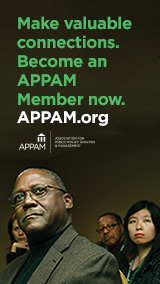Panel Paper:
Wage Returns to Stackable Credentials in Health Fields at California Community Colleges
*Names in bold indicate Presenter
Our analysis relies on student-level longitudinal data from California’s Community College Chancellor’s Office, linked to quarterly wage records reported to California’s Employment Development Department for UI purposes, for all students (with covered wages) prior to, during, and after community college enrollment. Our linked data cover 2000-2013. These data have several advantages. First, detailed course-taking information and vocational course designations allow us to construct a “CTE-intending” student sample, solving the methodological problem that colleges are open-access and do not require students to declare a program of study. Second, students who have enrolled in CTE courses, according to our preliminary analysis, have a longer – and perhaps more relevant – labor market history prior to entering a program of study. This feature allows us to identify wage returns more precisely by comparing pre- and post-credential wages.
Our first research objective is descriptive: how many and what type of students attempt or complete stackable awards within health career pathways, and how do their labor market outcomes vary. Preliminary results suggest that many students who complete multiple awards obtain only short-term certificates. However, students who stack awards along an intentional career ladder, such as medical assisting (short term) to registered nursing (long term), achieve similar wage gains to students who initially earn the long term award. We will consider how outcomes vary across student, program, and college characteristics.
Our second objective is to estimate the return to stackable credentials and assess heterogeneity. We rely on student fixed effect models to control for ability bias, assuming that students’ pre-enrollment wage histories provide the best control for unobserved ability. Theoretically, fixed effect models may still be misleading if entry into CTE is motivated by a dip in earnings. Following recent studies, we construct a control group who also had earnings prior to entering a career pathway, but failed to complete stackable credentials. By varying the sample to include students across different programs and who earn and/or attempt various awards, we can systemically identify combinations of CTE credentials that are most promising from a labor market perspective.













